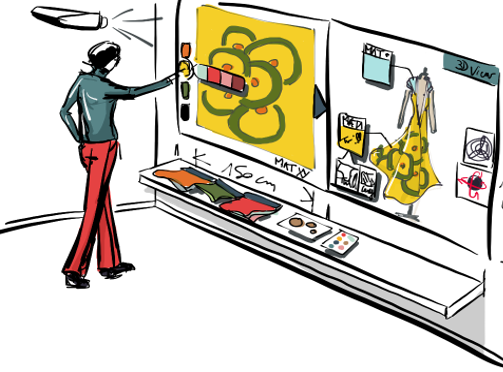
Transform Softwares to Support Changing Artisans and Designers’ Practices in Textile Industry
At The New Artisans, process & people go together with technological tools. Indeed the transformation of crasftsmanship is in part due to the digital transformation of companies.
Unlike the printing sector four decades ago, the various crafts in the clothing and accessories industries are far from being completely digital and their processes are yet to be stabilized because of disruptive presence of digital tools.
The New Artisans believe strongly in a necessary transformation of traditional craftsmanship. But not one that eliminates the skills nor impose itself drastically on creatives and skilled workers. Rather a digital transformation that empowers the artisans and designers in their creativity and relations with other teams and other processes in their companies. Many available tools today have designed to deliver a specific result (let say a digital pattern) with certain software or hardware limitations at the time, but rarely updating themselves to reintegrate the human factor, practices and details regarding how the result is obtained. Thus creating sharp division within the workforce between those digitally “educated” – but not always with the most expertise – and those not saavy for such tools, many of them great masters of their craft.
The New Artisans do not promote any specific software editor by principle. But when Lectra, specialized in Pattern and Cutting Softwares, asked advice on how to rethink their software features & offer it was a perfect moment to raise awareness among a majot technological actor in the industry.
This project aimed at realigning:
- Customers skills and expectations with Lectra’s Product owners and R&D Departments
- R&D priorities with markets priorities
- User Experience with the practices, skills and language of traditional craftsmanship for drapers, patternmakers and designers
This resulted, in collaboration with Tiga, in:
- Customer roadmap definition and vision for the future
- R&D collaborative workshops to contextualize the roadmap
- UX department repositioned and provided with “insider” practices and language

